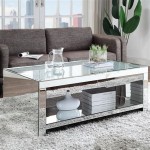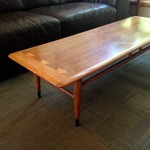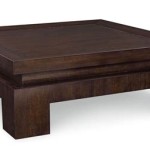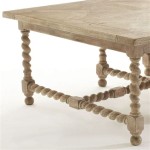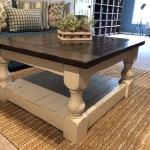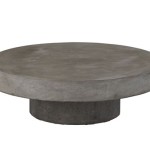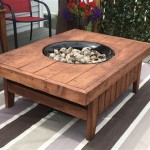How To Decorate a Small Living Room With a Dining Table
Successfully integrating a dining table into a small living room requires careful planning and a strategic approach to maximize space and maintain visual harmony. The challenge lies in creating distinct functional zones without making the area feel cramped or cluttered. Careful consideration must be given to furniture selection, layout, color schemes, and storage solutions to achieve a balanced and inviting living space.
Prioritizing Functionality and Flow
The initial step in decorating a small living room with a dining table involves prioritizing functionality. The layout should facilitate ease of movement and allow for comfortable use of both the living and dining areas. Consider the primary activities that will take place in each zone and arrange furniture accordingly. Walking paths should be clear and unobstructed. This maximizes the available space and ensures that the room functions efficiently.
One crucial aspect is determining the ideal location for the dining table. It should be positioned to allow for adequate seating and accessibility without impeding the flow of traffic through the living room. Often, placing the dining table near a window or a source of natural light can enhance the dining experience and visually expand the space. The proximity of the dining area to the kitchen is also a practical consideration, streamlining meal service and cleanup.
Furthermore, think about the frequency of use for both areas. If the living room is used more frequently, allocate a larger portion of the space to that zone. Conversely, if dining is a regular activity, the dining area might warrant a more prominent location. Adaptability is key, and the design should reflect the lifestyle and priorities of the occupants.
Selecting Space-Saving Furniture
Choosing the right furniture is paramount when decorating a small living room with a dining table. Opting for space-saving furniture allows you to maximize the available square footage without sacrificing comfort or style. Multifunctional pieces are particularly valuable in these situations, offering versatility and optimizing the utility of the space.
Consider a drop-leaf or expandable dining table. These tables can be adjusted in size depending on the number of people dining, freeing up valuable space when not in use. Paired with lightweight, stackable chairs, the dining area can be easily adapted to accommodate different needs.
For living room seating, choose a sofa or sectional that is appropriately scaled to the room. Overly large or bulky furniture can overwhelm a small space. Consider a sofa with built-in storage to keep blankets, pillows, or other items neatly organized. Ottomans that can double as coffee tables and storage units are another excellent option.
Wall-mounted shelves and cabinets are also effective space savers. They provide vertical storage and minimize the footprint of furniture on the floor. Mirrors strategically placed on walls can create the illusion of more space and reflect light, making the room feel brighter and more open.
Clear or transparent furniture, such as acrylic chairs or glass-topped tables, can also contribute to a more open and airy feel. These pieces allow light to pass through them, reducing visual clutter and making the room appear larger.
Using Color and Light to Enhance the Space
Color and lighting play a significant role in shaping the perception of space in a small living room. Strategic use of these elements can visually expand the room and create a more inviting atmosphere. Lighter colors tend to reflect more light, making a room feel brighter and larger, while darker colors can make a space feel smaller and more enclosed.
Consider using a light and neutral color palette for the walls, such as white, cream, or light gray. These colors provide a blank canvas that allows you to add pops of color through accessories, artwork, and textiles. Accent walls in a slightly darker shade can add depth and visual interest without overwhelming the space.
In terms of lighting, a combination of natural and artificial light is ideal. Maximize natural light by keeping windows unobstructed and using sheer curtains or blinds that allow light to filter through. Supplement natural light with a variety of artificial light sources, including overhead lighting, table lamps, and floor lamps.
Overhead lighting should be bright and even, providing general illumination for the entire room. Table lamps and floor lamps can be used to create softer, more ambient lighting in specific areas, such as the living room seating area or the dining table. Dimmable lights offer flexibility and allow you to adjust the lighting to suit different moods and activities.
Mirrors are invaluable tools for reflecting light and creating the illusion of more space. Place a large mirror on a wall opposite a window to maximize light reflection and visually double the size of the room. Smaller mirrors can be used as decorative accents, adding sparkle and dimension to the space.
Defining Zones with Rugs and Décor
In an open-plan living room and dining area, defining distinct zones is crucial for creating a sense of order and visual separation. Rugs and carefully chosen décor can be used to delineate the living room and dining area without the need for physical barriers. This method maintains an open feel while clearly distinguishing between the two functional spaces.
A large area rug can define the living room seating area, anchoring the sofa, coffee table, and chairs. The rug should be large enough to accommodate at least the front legs of the furniture, creating a cohesive and inviting space. Choose a rug that complements the color scheme and style of the room.
Similarly, a smaller rug can be placed under the dining table to define the dining area. The rug should be large enough to accommodate all of the chairs when they are pulled out from the table. A round rug can be particularly effective for defining a circular dining area, while a rectangular rug works well with a rectangular table.
Décor can also be used to create visual separation between the two zones. Consider using different colors, textures, and patterns in the living room and dining area to create distinct identities. Artwork, plants, and decorative objects can be strategically placed to draw the eye and guide the flow of movement through the room.
For example, a gallery wall in the living room can create a focal point and define the space, while a sculptural centerpiece on the dining table can draw attention to the dining area. A tall plant can be used to visually separate the two zones without completely blocking the view.
Optimizing Storage Solutions
Storage is paramount in a small living room with a dining table. Implementing clever storage solutions is crucial for keeping the space organized, clutter-free, and visually appealing. Effective storage options can range from built-in units to multifunctional furniture, all designed to maximize space and minimize clutter.
Consider incorporating built-in storage solutions, such as bookshelves, cabinets, or window seats with storage underneath. These custom-designed units can be tailored to fit the specific dimensions of the room and provide ample storage for books, media equipment, and other belongings. Built-in storage also creates a seamless and integrated look, enhancing the overall aesthetic of the room.
Multifunctional furniture is another excellent storage strategy. Opt for a coffee table with drawers or shelves, a sofa with built-in storage, or an ottoman that doubles as a storage chest. These pieces provide hidden storage without taking up additional floor space.
Vertical storage is particularly valuable in small spaces. Wall-mounted shelves, floating shelves, and tall bookcases can be used to store books, decorative objects, and other items without cluttering the floor. Hang shelves above the sofa or dining table to maximize vertical space and create visual interest.
Baskets and bins are useful for organizing smaller items, such as magazines, toys, and remotes. Place baskets on shelves or under tables to keep clutter contained and out of sight. Label the baskets clearly so that it is easy to find what you are looking for.
Consider utilizing the space under the dining table for storage. Wicker baskets or storage boxes can be placed under the table to store placemats, napkins, or other dining-related items.
Maintaining a Cohesive Design Style
While defining distinct zones is important, it is equally important to maintain a cohesive design style throughout the small living room and dining area. A unified design style creates a sense of harmony and balance, making the space feel polished and intentional. Consistency in color, materials, and furniture styles will contribute to a more visually appealing and cohesive space.
Choose a consistent color palette that extends throughout the entire room. This does not mean that everything has to be the same color, but rather that the colors should complement each other and create a sense of visual continuity. Select a few primary colors and use them as the foundation for the design, then add accent colors to create interest and depth.
Incorporate similar materials and textures throughout the space. For example, if you use wood furniture in the living room, consider using wood accents in the dining area. Similarly, if you use a particular fabric pattern in the living room, consider using it in a smaller scale in the dining area.
Choose furniture styles that complement each other. If you prefer a modern aesthetic, select furniture with clean lines and minimalist designs. If you prefer a more traditional aesthetic, opt for furniture with classic shapes and ornate details. Avoid mixing too many different styles, as this can create a cluttered and disjointed look.
Pay attention to the details. Small touches, such as matching hardware, consistent lighting fixtures, and coordinated accessories, can make a big difference in creating a cohesive design style. These details tie the room together and create a sense of polish and refinement.

Living Room And Dining Design Ideas Designcafe

Стулья стол Living Room Dining Combo Small Rooms Condo

Living Room Dining Combo Ideas With Tricks Doğtaş

Living Room And Dining Design Ideas Designcafe

Living Room Decorating Ideas How To Decorate A Small

Living Room Dining Combo Ideas With Tricks Doğtaş

Living Room And Dining Design Ideas Designcafe

Perfect Ways To Decorate A Living Room With Dining Area Attached Unique And Decor

Living Room Dining Combo Ideas With Tricks Doğtaş

How To Make Dining Area In Living Room
Related Posts

